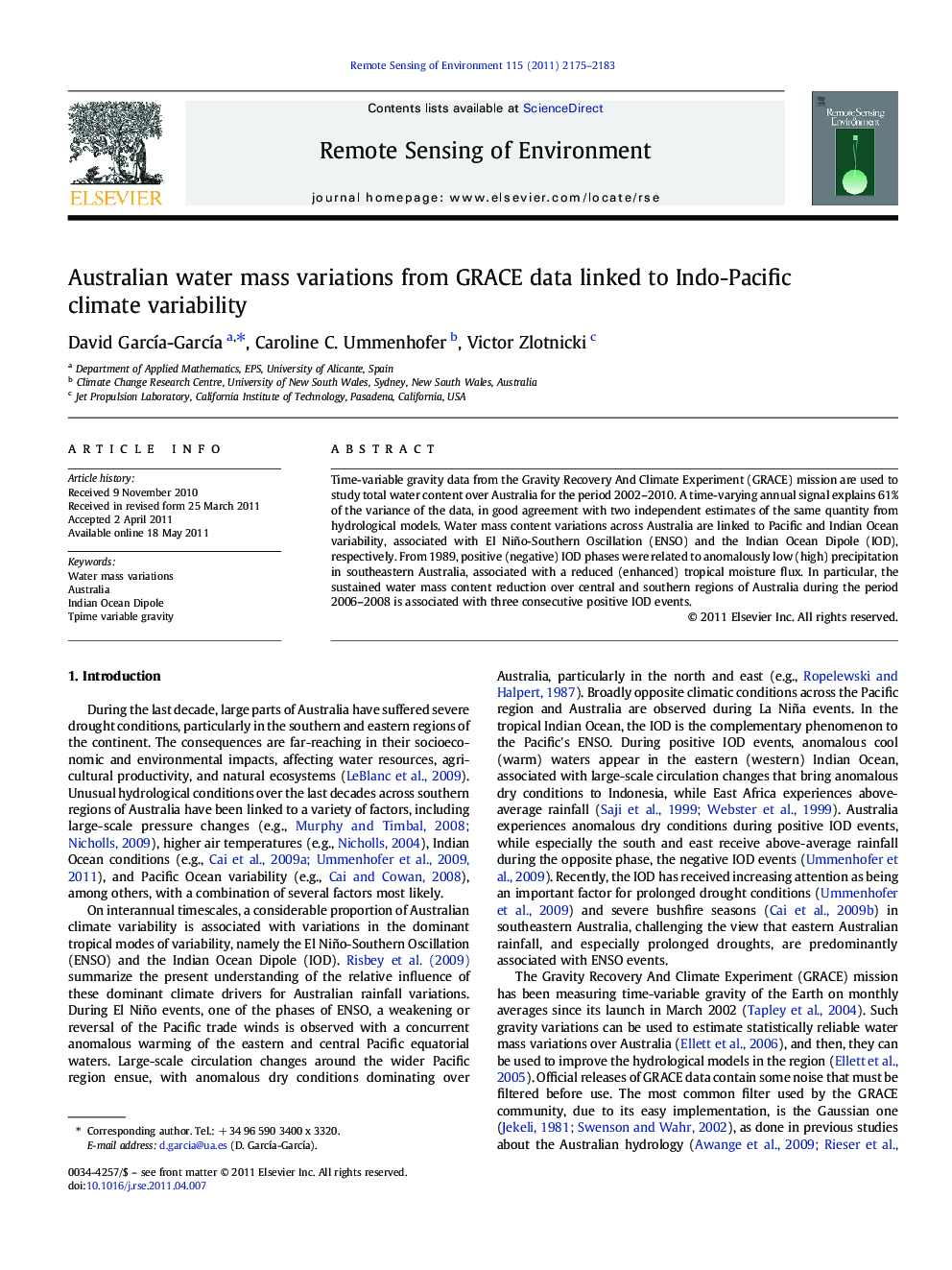| Article ID | Journal | Published Year | Pages | File Type |
|---|---|---|---|---|
| 4459427 | Remote Sensing of Environment | 2011 | 9 Pages |
Time-variable gravity data from the Gravity Recovery And Climate Experiment (GRACE) mission are used to study total water content over Australia for the period 2002–2010. A time-varying annual signal explains 61% of the variance of the data, in good agreement with two independent estimates of the same quantity from hydrological models. Water mass content variations across Australia are linked to Pacific and Indian Ocean variability, associated with El Niño-Southern Oscillation (ENSO) and the Indian Ocean Dipole (IOD), respectively. From 1989, positive (negative) IOD phases were related to anomalously low (high) precipitation in southeastern Australia, associated with a reduced (enhanced) tropical moisture flux. In particular, the sustained water mass content reduction over central and southern regions of Australia during the period 2006–2008 is associated with three consecutive positive IOD events.
Research highlights►The annual water mass (WM) variations of Australia depends on both ENSO and IOD. ►Low seasonal WM signals in 2006–2008 are produced by 3 consecutive IOD maxima. ►The interannual WM variations in southeast Australia are driven by the IOD.
